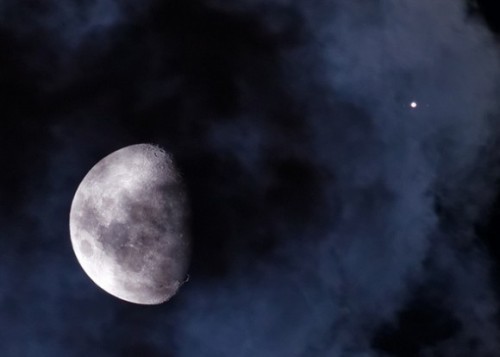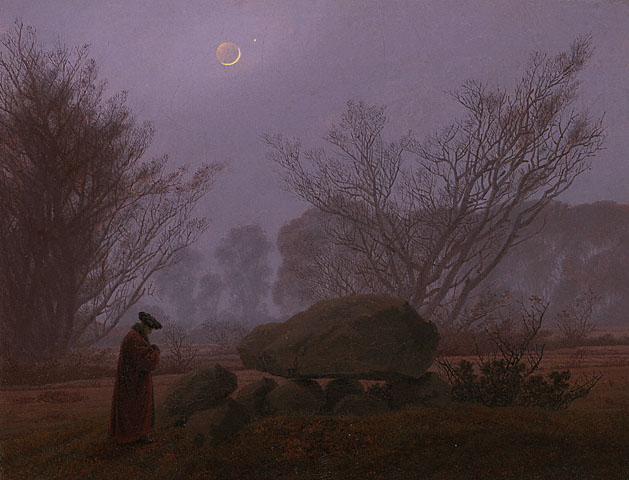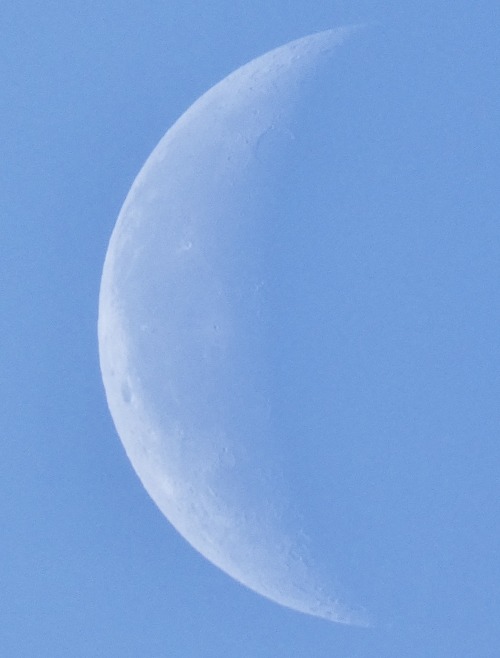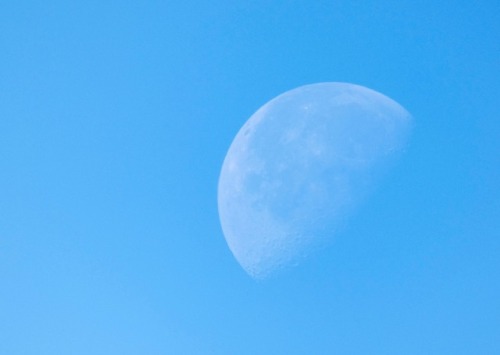Sometimes when I’m birdwatching
Monday, June 15th, 2020Sometimes when I’m birdwatching
Saturday, September 28th, 2019Sometimes when I’m birdwatching
Wednesday, November 28th, 2018dendroica: ikenbot: Jupiter and the Moon Have a Close…
Wednesday, February 20th, 2013
Jupiter and the Moon Have a Close Encounter in the Sky February 18, 2013
The movement of the Moon makes a fascinating study of celestial mechanics. Despite the light pollution it brings to the nighttime sky, we’re fortunate as a species to have a large solitary satellite to give us lessons in “Celestial Mechanics 101″
This weekend, we’ll get to follow that motion as the Moon crosses into the constellation Taurus for a near-pass of the planet Jupiter, and for a very few citizens of our fair world, occults it.
In astronomy, the term “occultation” simply means that one astronomical body passes in front of another. The term has its hoary roots in astronomy’s ancient past; just like the modern day science of chemistry sprung from the pseudo-science of alchemy, astronomy was once intertwined with the arcane practice of astrology, although the two have long since parted ways. When I use the term “occultation” around my non-space geek friends, (I do have a few!) I never fail to get a funny look, as if I just confirmed every wacky suspicion that they ever had about us backyard astronomers…
But those of us who follow lunar occultations never miss a chance to observe one. You’ll actually get to see the motion of the Moon as it moves against the background planet or star, covering it up abruptly. The Moon actually moves about 12° degrees across the sky per 24 hour period.
On the evening of Monday, February 18th, the 56% illuminated waxing gibbous Moon will occult Jupiter for Tasmania and southern Australia around 12:00 Universal Time (UT). Folks along the same longitude as Australia (i.e., eastern Asia) will see a close pass of the pair. For North America, we’ll see the Moon approach Jupiter and Aldebaran of February 17th (the night of the Virtual Star Party) and the Moon appear past the pair after dusk on the 18th.
I didn’t realize this was happening last night.
I love conjunctions (what the image above actually shows, when two celestial bodies are close together in the sky, as opposed to occultations, when one body actually passes in front of the other). (I love occultations, too. But I’m not talking about those now.)
Seeing this image in my dash reminded me of a painting I saw during my trip to the Getty last weekend. Here it is:

From the Getty placard:
A Walk at Dusk (About 1830-35)
Caspar David Friedrich (German, 1774-1840)
Oil on canvas
The most celebrated of the German Romantic painters, Friedrich possessed a deeply personal and introspective vision that attracted a wide following. Among the last canvases he completed before a debilitating stroke, A Walk at Dusk shows a single figure — perhaps the artist himself — contemplating a megalithic tomb. This symbol of death is counter-balanced by the waxing moon, which represented for Friedrich Christ’s promise of rebirth.
[me again]
The placard didn’t mention it, but you can see that Friedrich didn’t just paint the young crescent moon; he also painted a bright planet (either Venus or Jupiter) in a close conjunction with it.
A crescent moon low in the sky is a beautiful thing by itself, but a planetary conjunction makes it even better. I want to write more about this painting, but I’ll save it for another post.
Reposted from http://lies.tumblr.com/post/43577300097.




